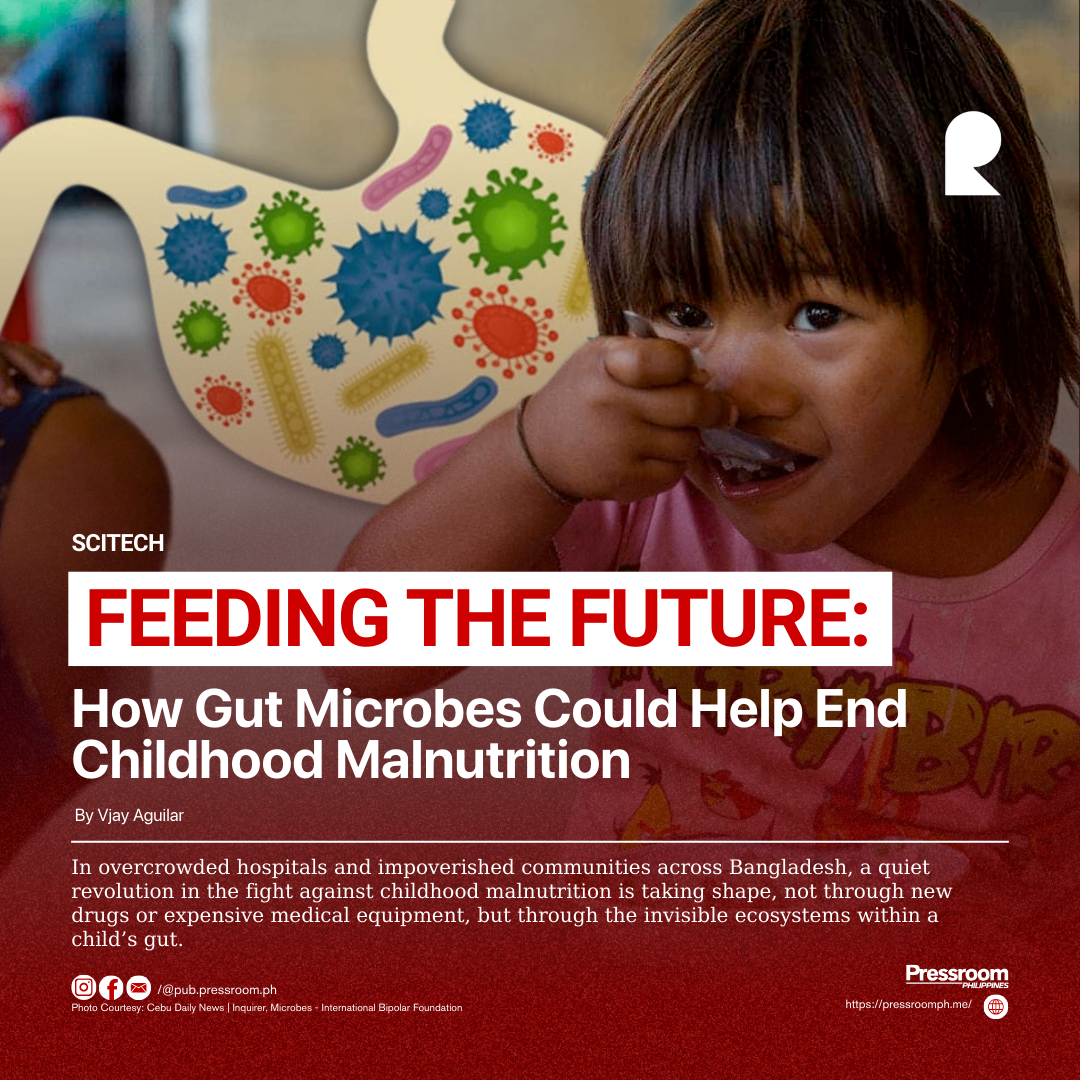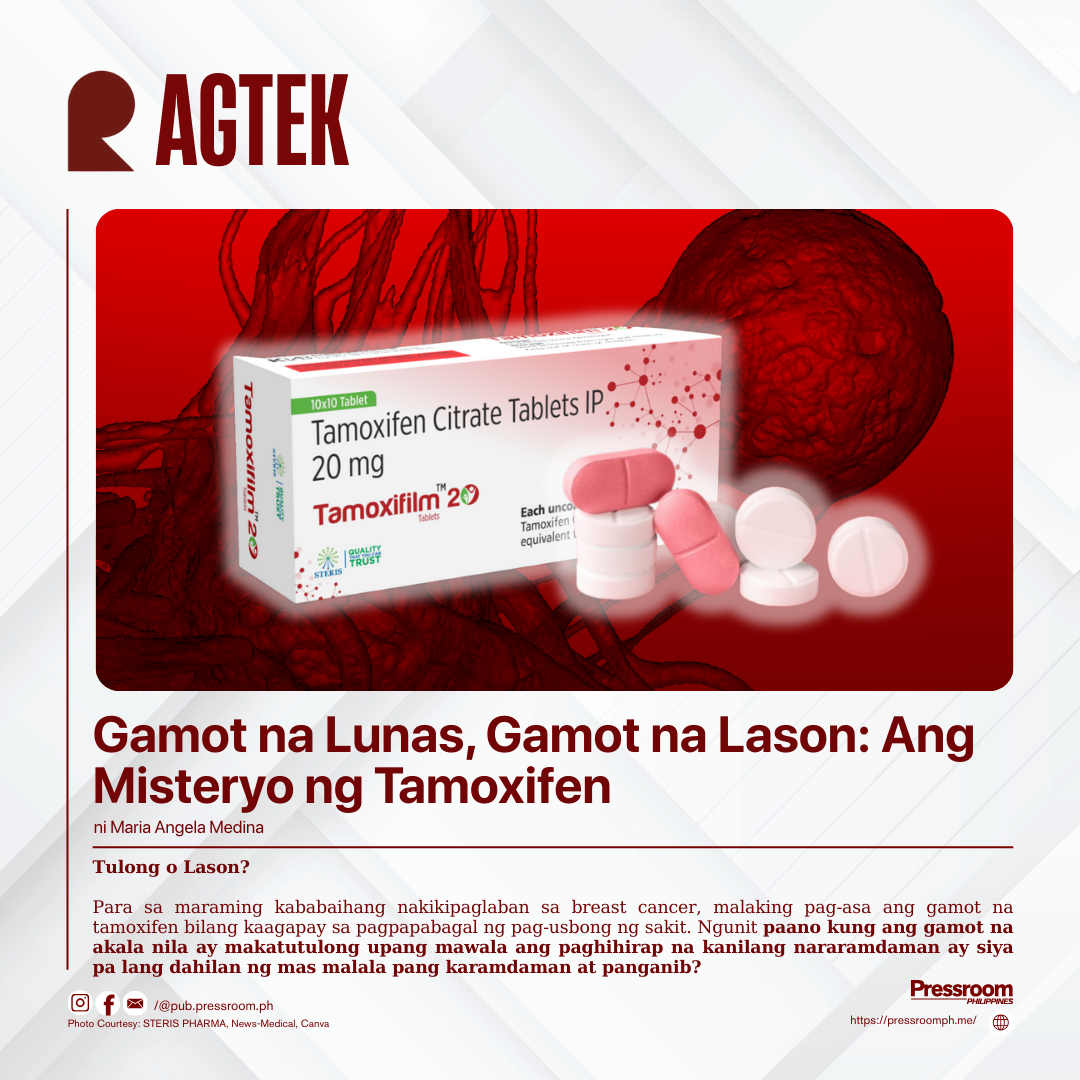𝘃𝗶𝗮 𝗩𝗷𝗮𝘆 𝗔𝗴𝘂𝗶𝗹𝗮𝗿, 𝗣𝗿𝗲𝘀𝘀𝗿𝗼𝗼𝗺 𝗣𝗛
In overcrowded hospitals and impoverished communities across Bangladesh, a quiet revolution in the fight against childhood malnutrition is taking shape, not through new drugs or expensive medical equipment, but through the invisible ecosystems within a child’s gut.
For decades, global health strategies have focused on providing malnourished children with ready-to-use therapeutic foods (RUFs): calorie-rich pastes made of milk powder, peanuts, vegetable oil, and sugar. While these treatments have saved countless lives, many children continue to suffer long-term effects such as stunting, weakened immune systems, and developmental delays.
Now, a growing body of research suggests that nourishing the microbial communities in the intestines, the gut microbiome, could be just as crucial as delivering calories and vitamins. A new study published this week in Science Translational Medicine strengthens this idea, showing that “microbiome-directed” supplements can improve recovery rates not only for moderately malnourished children, as earlier studies confirmed, but also for those suffering from severe malnutrition.
“The work is a beautiful demonstration of how food that supports our gut microbes can lead to better health,” says Justin Sonnenburg, a microbiome scientist at Stanford University.
A Dacade of Discovery
The connection between gut health and childhood nutrition was first highlighted a decade ago by microbiome expert Jeffrey Gordon of Washington University in St. Louis and childhood malnutrition specialist Tahmeed Ahmed of the International Centre for Diarrhoeal Disease Research, Bangladesh. Their pioneering studies revealed that severely malnourished children not only lacked essential nutrients but also had underdeveloped intestinal microbiomes, microbial ecosystems resembling those of newborns rather than healthy toddlers.
When germ-free mice were given gut microbes from malnourished children, the rodents showed poor muscle development and impaired immune function compared to those with microbes from well-nourished peers. This landmark discovery suggested that repairing the microbiome could ease the devastating effects of malnutrition.
A Microbiome-Directed Solution
Building on these insights, the research team developed a dietary supplement made from locally available ingredients like chickpeas, bananas, soy, and peanut flour, foods shown in animal studies to stimulate the normal development of gut microbes.
A 2021 trial involving 118 malnourished children aged 12 to 18 months found that those who received the microbiome-directed supplement gained weight faster and exhibited healthier changes in blood protein markers than those fed with standard RUFs. Most notably, a follow-up study published this June confirmed that the new supplement could reverse stunting, something conventional treatments had failed to achieve.
The latest study takes this breakthrough a step further by focusing on children with severe acute malnutrition, a condition affecting 15 million children globally and often marked by emaciation, lethargy, and life-threatening complications. Among 124 children treated in hospitals across Bangladesh, those who received the microbiome-targeting supplement gained weight faster and showed higher blood concentrations of proteins crucial for muscle, bone, and brain development.
“This clinical study is an important milestone in the field,” notes Amélie Joly, a malnutrition researcher at CNRS, France’s national science agency.
The Role of Key Microbes
Further investigation revealed that one microbial species, Prevotella copri, played a significant role in this transformation. Researchers found that P. copri activated genes responsible for breaking down carbohydrates, proteins, and fats, providing critical energy sources for growth. In mice studies, rodents colonized with P. copri-rich microbiomes gained more weight and exhibited stronger intestinal development than those without it.
This discovery highlights how specific beneficial bacteria can influence the way a child’s body responds to nutrition, potentially reshaping treatment strategies for millions.
Global Trials and Future Challenges
Encouraged by these results, a massive multi-country clinical trial led by the World Health Organization is now underway. Launched 15 months ago, the trial aims to enroll over 6,300 children across Bangladesh, India, Pakistan, Mali, and Tanzania to determine whether microbiome-directed supplements can succeed in diverse cultural and dietary settings. Results are expected by the end of 2025.
Still, experts caution that significant hurdles remain. Communities familiar with RUFs may resist switching to new supplements. Scaling up production, ensuring affordability, and integrating these treatments into national health programs will be crucial.
“The jury is still out,” says Nigel Rollins, a pediatrician at the WHO, “but the evidence so far is encouraging.”
A New Chapter in Malnutrition Care
As the global health community grapples with persistent childhood malnutrition, this microbiome-focused approach offers a hopeful new direction. By treating not just the body but the ecosystems within it, scientists may be on the brink of transforming how the world nourishes its most vulnerable children.
If successful, this strategy could one day help millions of malnourished children not just survive, but thrive.






